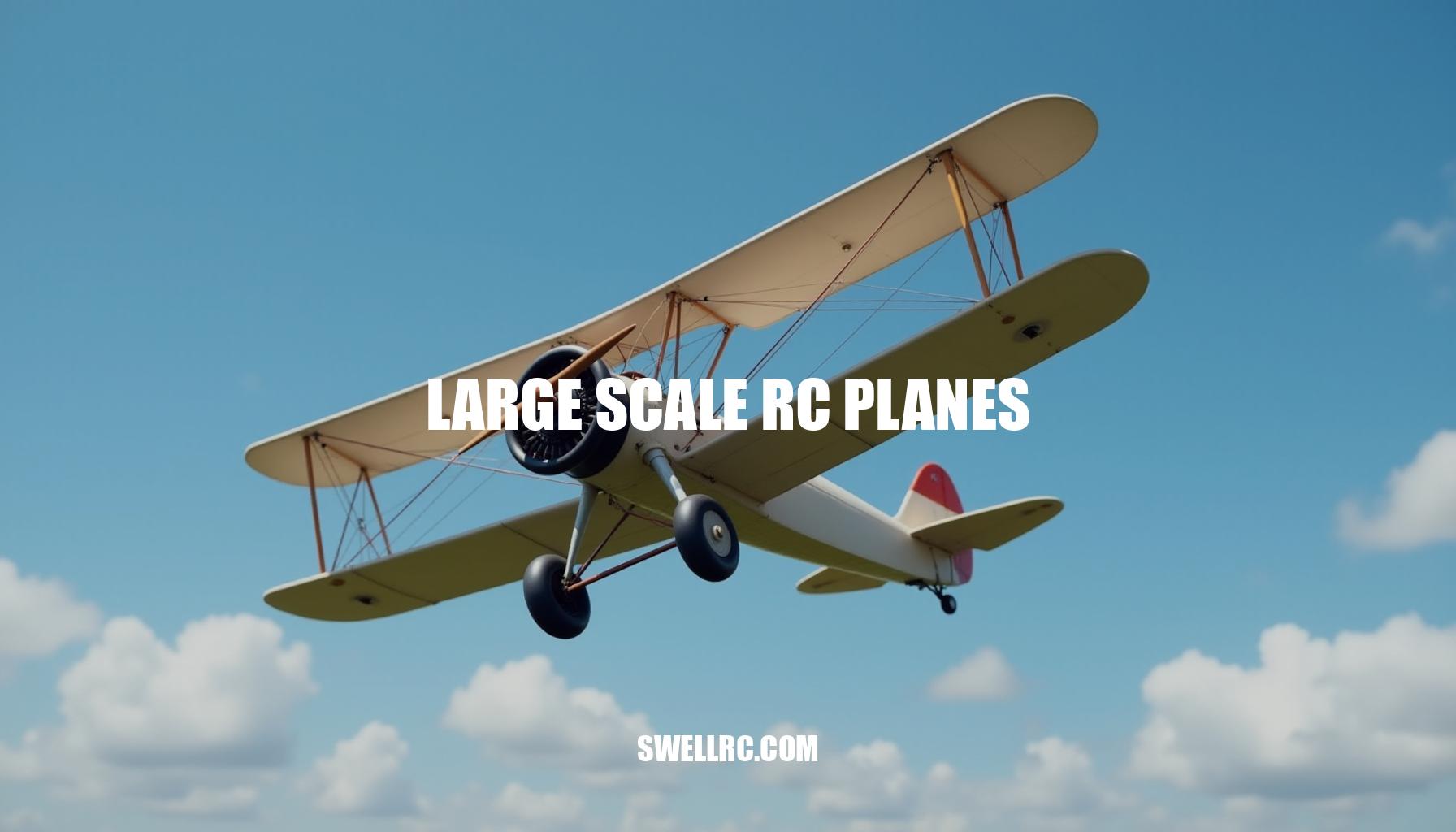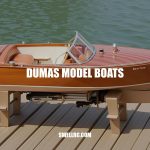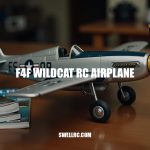The Ultimate Guide to Large Scale RC Planes
I still remember the first time a giant Spitfire rotated off our club’s grass strip—its wingtips whispering over the daisies, the four-blade prop clawing at the morning air. That was the moment large scale RC planes stopped being mere “models” and started feeling like real, full-sized aircraft to me. In the world of RC aviation, “large scale” typically refers to radio controlled aircraft at 1:6 scale and bigger, including 1:5, 1:4, and even 1:3 scale models, with wingspans often ranging from roughly 1.8 to over 4 meters.
These giant scale models require precise engineering and responsible piloting due to their size and weight. Whether you’re an experienced RC hobbyist or just exploring, the thriving RC hobbyist communities are full of events and clubs that push performance and craftsmanship every season. If you’re scouting inspiration, browsing World Models RC planes offers a fantastic glimpse into what’s possible in the realm of large scale RC planes.
In this guide, I’ll share what I’ve learned about different power systems, highlight iconic RC airplanes worth your attention, and provide essential tips on flying and maintaining these impressive machines safely and confidently.
What Makes a Plane “Large Scale”? Decoding the Dimensions
In the world of RC scale measurement, understanding how a model’s dimensions relate to the full-size aircraft is crucial. Large scale RC models, typically ranging from 1:6 and larger ratios like 1:5, 1:4, and 1:3, are especially significant in the radio controlled aircraft dimensions category. These scales often include jets and airliners due to their size requirements.
Wingspan ranges for these large scale models typically fall between 1.8 to 4.5 meters, influencing both the design and choice of components.
One key factor to consider in larger models is AUW (all-up weight), which can range from approximately 7 to over 40 kilograms. This weight directly impacts structural choices as well as the necessary power systems. Gasoline RC planes in these scales usually require engines from 30 to 120 cc, while large scale RC jets might employ turbines with thrust outputs between 60 and 160 N.
Electric power systems vary accordingly, often using high-voltage setups between 8S and 20S LiPo batteries.
Additionally, servo selection is critical to ensure precise control, with high-torque servos delivering between 25 and over 50 kg·cm of torque being common. Robust dual power buses and heavy-duty linkages are often integrated to handle the demands of these sizeable radio controlled aircraft.
| Scale | Wingspan Range (m) | AUW (kg) | Power Systems |
|---|---|---|---|
| 1:3 | 3.0 – 4.5 | 20 – 40+ | 100 – 170 cc gas or 16 – 20S electric |
| 1:4 | 2.5 – 3.5 | 12 – 25 | 60 – 120 cc gas or 12 – 16S electric |
| 1:5 | 2.0 – 3.0 | 10 – 20 | 50 – 70 cc gas or 10 – 14S electric |
| 1:6 | 1.8 – 2.5 | 7 – 14 | 35 – 60 cc gas or 8 – 12S electric |
| 1:7 | 1.6 – 2.2 | 6 – 12 | 30 – 50 cc gas or 8 – 10S electric |
When selecting components based on RC scale measurement, it’s important to account for how power requirements and weight increase disproportionately with size. For example, a 1:5 scale plane offers a balanced representation with wingspan ranges between 2.0 and 3.0 meters and AUW from 10 to 20 kilograms, making it ideal for enthusiasts looking to explore larger builds.
For more insights into specific model dimensions and component sizing, particularly in the 1:5 class, check out this detailed overview: 1:5 Scale RC Plane.
Engineering & Performance — The Science Behind the Thrill
Large scale RC planes represent an exquisite blend of art and engineering, where every detail from material selection to aerodynamic design plays a vital role. When building these impressive models, the choice of RC plane building materials becomes crucial. Traditional balsa and plywood remain the backbone of many large RC warbirds, offering a lightweight yet robust framework that is also easily repairable.
For areas demanding greater stiffness and precision, especially in composite RC planes, craftsmen turn to fiberglass and carbon fiber airframes. These materials excellently handle high-load stresses and facilitate complex curves that are characteristic of performance aerobats.
CARF RC planes stand as prime examples of superior composite airframe construction, balancing rigidity at high speeds with graceful landings. Their designs embody what happens when composites are executed with precision and expertise, as detailed at CARF RC planes.
Understanding power-to-weight ratio is essential in large scale RC plane performance. Gas engines provide exhilarating flight times, with instant refueling capabilities and an authentic engine sound that enthusiasts adore. A 60–120 cc twin engine powering a 1:4 aerobat, for instance, creates a genuinely thrilling experience.
Conversely, gas vs electric RC planes debates highlight the advantages of electric systems: reduced vibration, pinpoint throttle response, and minimal upkeep. Modern high-voltage setups utilizing 12–16S lithium polymer batteries offer breathtaking capabilities that rival traditional powerplants. For those seeking unmatched speed and realism, turbine RC jets represent the pinnacle, albeit demanding meticulous heat management, advanced fuel systems, and careful runway procedures.
Aerodynamic precision is paramount. Large wings on these models not only dampen turbulence but also enhance stable tracking, almost as if the plane is guided on rails. However, increased inertia requires precise center-of-gravity (CG) positioning and adequate tail volume to maintain honest pitch responsiveness.
Attention to details like proper wing washout, flap configurations, and landing gear retraction geometry can transform a challenging approach into a smooth and manageable landing.
The Avios C-130 is a standout real-world example illustrating the potential of multi-motor electric configurations. Equipped with four synchronized powerplants, expansive barn-door flaps, and the unmistakable silhouette of the Hercules transport, this model exemplifies how electric power systems scale elegantly for giant planes. When all four throttles spool up in unison, the sensation transcends typical RC flying—delivering genuine goosebumps, as seen at Avios C-130 RC plane.
From the pilot’s perspective, the moment of first rotation is breathtakingly authentic, closely mimicking real aircraft liftoff. Once properly trimmed, these large models find a buttery smooth groove, allowing for wide, graceful circuits, slow passes, and landings that emphasize patience instead of heroics.
Iconic Giants — Models That Redefine RC Aviation
Among giant scale models, certain standouts have set benchmarks for presence, engineering, or sheer audacity that captivate enthusiasts worldwide. The Boeing 747 RC plane, often dubbed the queen of the skies in miniature, impresses with its multi-engine coordination and sleek flap systems, delivering cinematic approaches that thrill spectators. Likewise, the giant RC airliner category showcases large RC airliners with twin to quad motor setups, offering turbine or EDF realism, long endurance, and gracefully stabilized flight profiles.
Pushing boundaries further, the biggest RC airplane builds feature record-class spans and complex systems often requiring teams of builders to manage these extraordinary projects.
In addition, multi-engine RC planes such as twin- and four-motor transports (e.g., C-130, DC-3) are renowned for their huge flaps, multi-motor symmetry checks, and unbeatable ramp presence. Not to be overlooked are giant warbirds like the P-51, Spitfire, and Fw-190, which deliver torque-laden climbs, scale retracts, and the authentic sound and stance beloved by scale modelers. Meanwhile, large aerobats including the Extra 300/330 and Yak 54 exemplify brutal precision with monster control authority, mastering knife-edge flight and other advanced maneuvers.
| Category | Wingspan | Weight | Powerplant |
|---|---|---|---|
| Giant airliner (EDF & turbines) | 3.0–4.5 m | 15–35 kg | Turbine or multi-EDF |
| Large warbird (1:4–1:5 scale) | 2.3–3.2 m | 12–22 kg | 60–100 cc gas or 12–16S electric |
| Big aerobat (1:3.5–1:4 scale) | 2.6–3.1 m | 12–20 kg | 80–120 cc gas or 12–14S electric |
| Heavy-lift transport (multi-engine) | 2.5–3.5 m | 12–28 kg | Twin or quad electric/gas |
These categories reflect the pinnacle of turbine RC jets and EDF airliners that combine scale authenticity with remarkable engineering. Whether it’s the intimate details of a giant warbird or the awe-inspiring size of a record RC airplane, the passion for large, elaborate models continues to grow among RC enthusiasts worldwide.
Building & Customizing — Turning a Dream into Flight Reality
Kitting up a big model RC airplane is a true journey requiring thorough planning, patience, and a touch of obsession to ensure success and safety. When you dive into building RC airplanes, understanding each step guarantees you manage factors like cost of large scale RC plane kits, electronics selection, balancing and setup, and crucial fail-safe features effectively.
Here’s a step-by-step basics guide to help you navigate this process:
- Plan: Start by studying the manual, parts list, recommended center of gravity (CG) range, and power system guidelines thoroughly. Sketch your wiring diagrams, switch layouts, and incorporate plans for redundancy to enhance reliability.
- Dry-fit airframe: Test-fit critical components such as wings, stabilizers, retractable landing gear, and cowl. Mark servo locations, wire pathways, and reinforcement points to streamline assembly.
- Adhesives and reinforcements: Use quality epoxies combined with hardwood hardpoints. Applying carbon tape in high-load areas is a proven method to increase structural integrity.
- Electronics: Select high-torque, metal-gear servos suitable for your model’s demands. Consider dual battery setups, redundant receivers or power buses, and equip telemetry systems to monitor temperatures and voltage levels during flight.
- Powertrain: Carefully match your propeller, motor or engine, and ESC or ignition system to meet thrust requirements and expected all-up weight (AUW). Don’t overlook essential cooling and baffling to maintain engine or ESC performance and longevity.
- Balance and setup: Set the CG slightly towards the nose for the maiden flight. Confirm control surface incidence and throws are within recommended parameters, followed by comprehensive range and fail-safe features tests for reliability.
- Test flight and tuning: Fly conservative patterns while logging temperature readings and power consumption. Adjust thrust angles, control mixes, and flap-to-elevator compensation as necessary to optimize flight performance.
Big RC plane kits provide a versatile pathway that strikes a balance between Almost Ready to Fly (ARF) convenience and full custom builds. They allow customization in servos, power systems, and finishing details without the need to scratch-build everything from scratch. Explore quality options at SwellRC’s Big RC Plane Kits to find a suitable model within your budget and needs.
When deciding between off-the-shelf and custom builds, consider these points:
| Type | Pros | Cons |
|---|---|---|
| ARF / Composite | Faster assembly, consistent manufacturing quality, quicker to get in the air | Less customization, potential compromises on weight and detailing |
| Kit / Custom | Maximum personalization, optimized weight efficiency, enhanced scale detailing | Longer build time, requires advanced skills and patience |
Finally, approach your build mindset like assembling a safety-critical system. Label every component meticulously, document all settings clearly, and maintain a detailed build log. Incorporating redundancy and deploying real-time telemetry tools aren’t optional—they are essential steps to achieve a reliable and satisfying RC plane experience.
Beyond the Sky — Large Scale RC Variants and Crossover Hobbies
Big RC skills translate seamlessly across large scale RC variants like air, rotor, and watercraft. If you’re passionate about engineering puzzles and smooth control, you’ll find a natural fit in multiple niches.
Helicopters: Managing complex rotor systems, headspeed adjustments, and governor tuning exercises a different part of your pilot brain. For example, a large scale Chinook RC helicopter showcases tandem-rotor complexity and jaw-dropping presence.
Check it out here.
Boats: Power system rigging, battery management, and waterproofing offer fresh challenges, coupled with long, relaxed run times. Browse large scale RC boats for sale to round out your fleet here.
What transfers beautifully across these crossover hobbies are key skills such as:
- Clean wiring, redundancy, and vibration management
- Telemetry-driven maintenance and component health monitoring
- Participation in RC communities—clubs and events where skills accelerate rapidly
Flight control systems and customization skills you develop in one RC domain make mastering another large scale craft both less intimidating and equally rewarding. Ultimately, diving into these varied RC areas enriches your expertise and passion.
Safety, Regulations & Responsible Flying
Big models earn big respect. Ensuring safety for large RC planes involves a little structure and discipline, making every flight not only more enjoyable but safer for everyone involved.
Understanding flight regulations is crucial. Always check local requirements regarding:
- Registration and Remote ID: Many countries mandate registration for aircraft above certain weight thresholds, with Remote ID requirements applying unless operations are confined to approved sites.
- Weight thresholds: Additional inspections or documentation may become necessary for heavier models (such as those around 25 kg in some regions or 55 lb under particular U.S. programs). Always comply with your national laws and club guidelines.
- Insurance and flying fields: Club membership typically includes insurance for RC aviation and access to designated flying zones, which enhance both safety and legal compliance.
Implementing a thorough pre-flight checklist is vital to responsible flying:
- Airframe: Verify all fasteners, hinges, linkages, landing gear, and structural reinforcements are secure.
- Controls: Perform a power-on control check, ensuring correct directional responses and full range tests with antennas oriented as during actual flight.
- Power: Confirm battery health and balance, or check fuel and ignition systems; verify failsafe functionality.
- CG and configuration: Double-check the center of gravity along with flap and elevator mixes and flight mode settings.
- Environment: Assess wind limits, runway length, traffic pattern, and have a clear emergency plan in place.
Pro tip: Responsibility multiplies the fun. Maintaining smooth briefings with your spotter, adhering to disciplined flight patterns, and executing predictable landings make you everyone’s favorite pilot to fly with.
Conclusion — Why Large Scale RC Planes Are Worth Every Minute
Large scale RC aviation uniquely blends engineering and artistry to create models that truly feel alive. From the first throttle advance to the last taxi back, the connection between pilot and airframe is palpable—light on the sticks, yet heavy in presence, making every flight an endlessly rewarding experience to refine and perfect.
Whether your passion lies in piloting giant warbirds, mastering aerobatics, or commanding impressive large RC airliners, today’s advancements in RC plane kits, composites, and electronics have made superior flight performance more achievable than ever before.
Revisit the models that fueled your inspiration—from record-breaking giants and iconic airliners to versatile cargo birds—and continue exploring the diverse paths within this exciting hobby. Remember, in the world of large scale RC aviation, the sky isn’t the limit; it’s just the beginning.
Frequently Asked Questions
- What scale is considered large in RC planes?
Most hobbyists consider 1:6 and larger to be “large scale,” with 1:5, 1:4, and 1:3 common among giant models. Practically, that’s roughly 1.8–4.5 m wingspans and 7–40+ kg AUW depending on the subject and materials. - How much does a large scale RC airplane cost?
Expect about $600–$2,000 for smaller large-scale electrics, $2,000–$6,000 for many 1:5–1:4 gas or composite builds, and $6,000–$20,000+ for high-end composites or turbines. Servos, batteries, retracts, and finishing supplies add significantly. - Are large RC planes hard to fly?
They’re different, not necessarily harder. Larger spans add stability and visibility, but mass and inertia mean you must manage energy carefully. Good CG, appropriate control throws, and long, unhurried patterns make big planes fly beautifully. - What’s the difference between a large scale RC jet and a propeller-driven plane?
Jets use turbines or EDFs with high approach speeds and slower throttle response (spool-up), requiring longer runways and precise energy management. Propeller-driven planes generally land slower, offer stronger low-speed thrust, and are more forgiving. - Can I build a large scale RC plane from a kit?
Absolutely. Big kits and ARFs let you choose servos, power systems, and finishes while providing pre-cut or pre-molded structures. Plan your wiring, redundancy, and cooling early, and maiden conservatively with a slightly nose-heavy CG. - What are the best materials for building large RC planes?
For strength-to-weight and repairability: balsa/plywood. For stiffness and precision: fiberglass and carbon composites. Foam-core structures are great for electrics and EDFs. Many top builds mix wood frameworks with composite skins or reinforcements. - Are there legal requirements for flying large RC planes?
Yes. Many regions require registration over a small weight threshold, and Remote ID rules may apply. Heavier models can trigger additional inspections or program requirements. Fly at recognized fields, carry insurance where available, and follow local laws. - How do you maintain and store big RC airplanes safely?
– Inspect hinges, linkages, and gear each session. – Log battery cycles or engine hours. – Keep electronics dry, vibration-isolated, and well-ventilated. – Store wings/fuselages supported at bulkheads, not wingtips. – Transport with control surfaces immobilized and connectors labeled.



